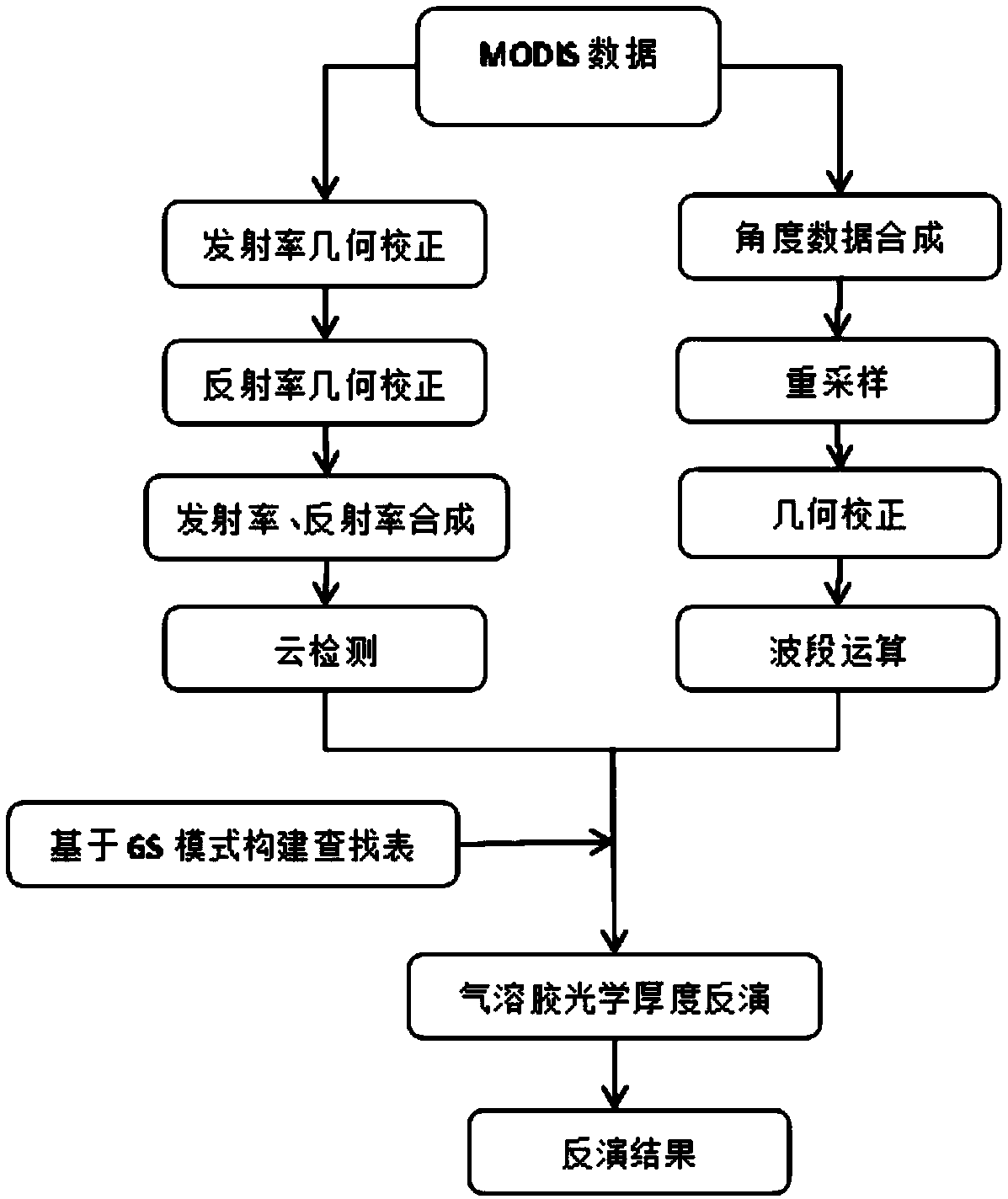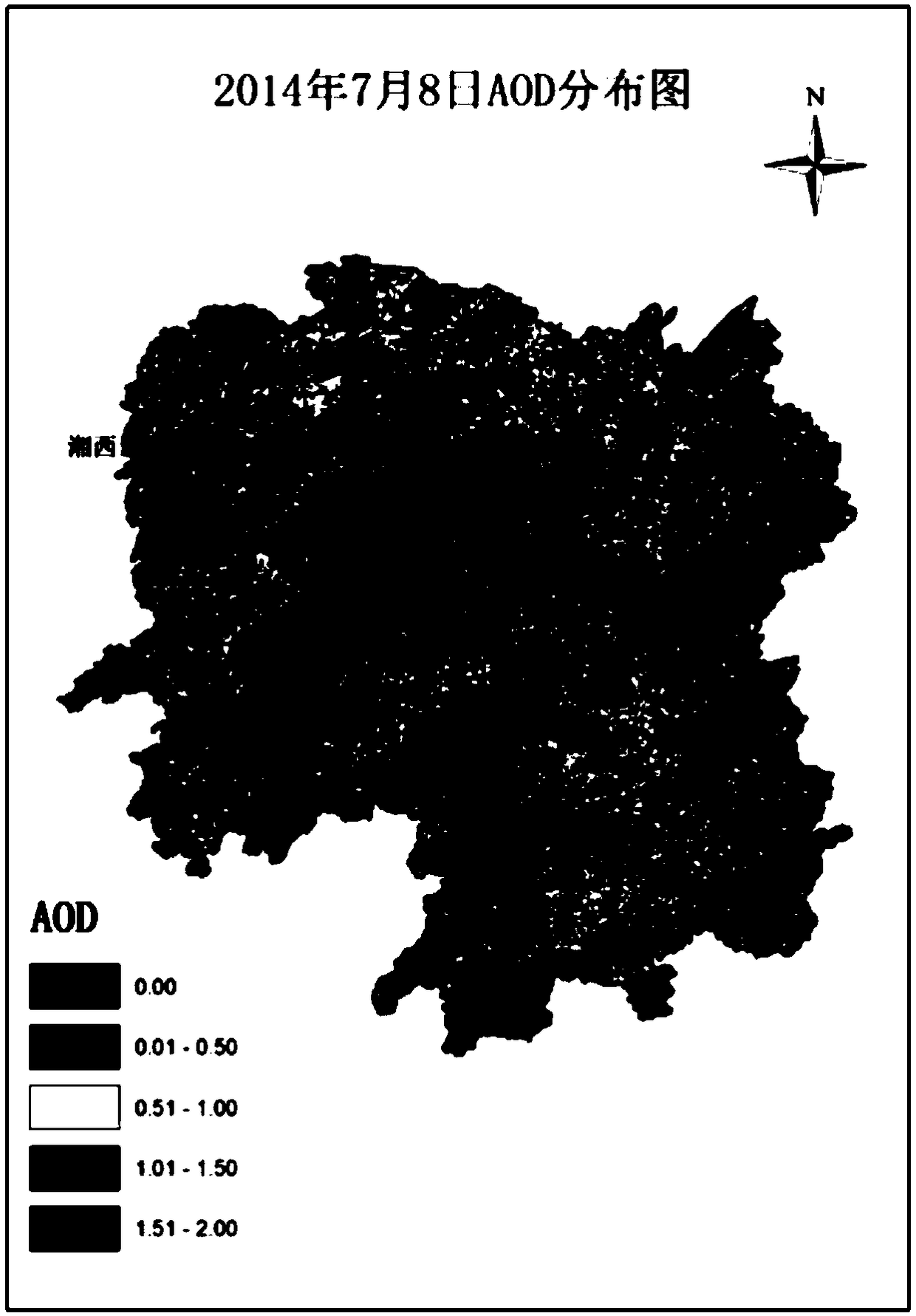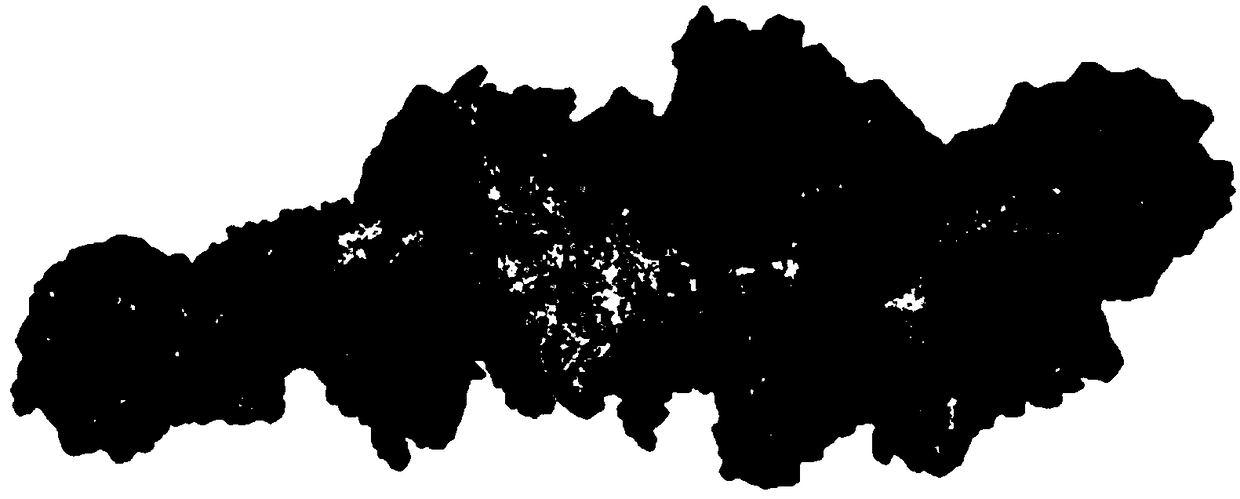Aerosol optical thickness inversion method based on remote sensing data
A technology of optical thickness and remote sensing data, applied in scientific instruments, measuring devices, suspension and porous material analysis, etc., can solve problems such as difficult to use, difficult to obtain data, missing data, etc., to facilitate prevention and management, and improve correlation , good effect
- Summary
- Abstract
- Description
- Claims
- Application Information
AI Technical Summary
Problems solved by technology
Method used
Image
Examples
Embodiment Construction
[0028] The invention uses the dark pixel method based on MODIS data to invert the aerosol optical thickness in order to obtain products with higher resolution and serve related research.
[0029] When the land surface is a uniform Lambertian surface and the atmosphere changes uniformly vertically, the satellite measurement can be expressed by the apparent reflectance. When the surface reflectance is small, the satellite observation reflectance mainly depends on the atmospheric contribution. When the surface reflectance is large, the contribution of the surface becomes the main contribution term. In this way, the basis of the inversion can be obtained: if the surface reflectance is known, the aerosol optical depth can be obtained by determining the atmospheric aerosol model.
[0030] dark pixel method
[0031] Different surface objects have different reflectivity. Therefore, it is very difficult to separate the path radiation item from the radiation value of the remote sensin...
PUM
 Login to View More
Login to View More Abstract
Description
Claims
Application Information
 Login to View More
Login to View More - R&D
- Intellectual Property
- Life Sciences
- Materials
- Tech Scout
- Unparalleled Data Quality
- Higher Quality Content
- 60% Fewer Hallucinations
Browse by: Latest US Patents, China's latest patents, Technical Efficacy Thesaurus, Application Domain, Technology Topic, Popular Technical Reports.
© 2025 PatSnap. All rights reserved.Legal|Privacy policy|Modern Slavery Act Transparency Statement|Sitemap|About US| Contact US: help@patsnap.com



